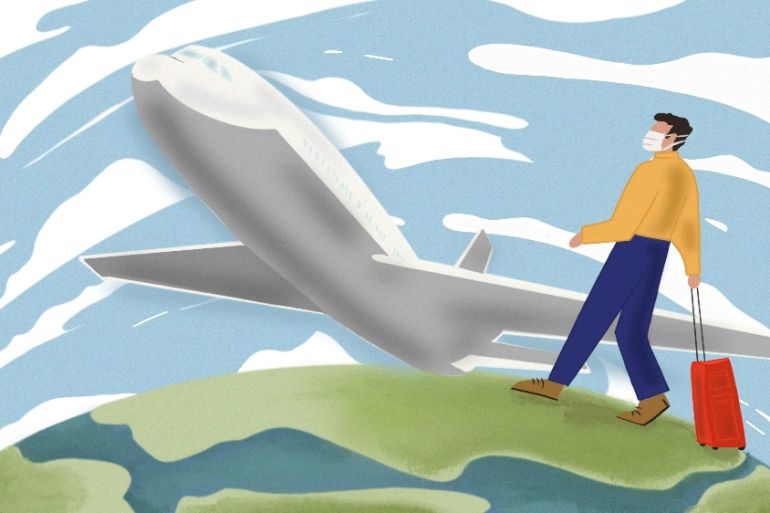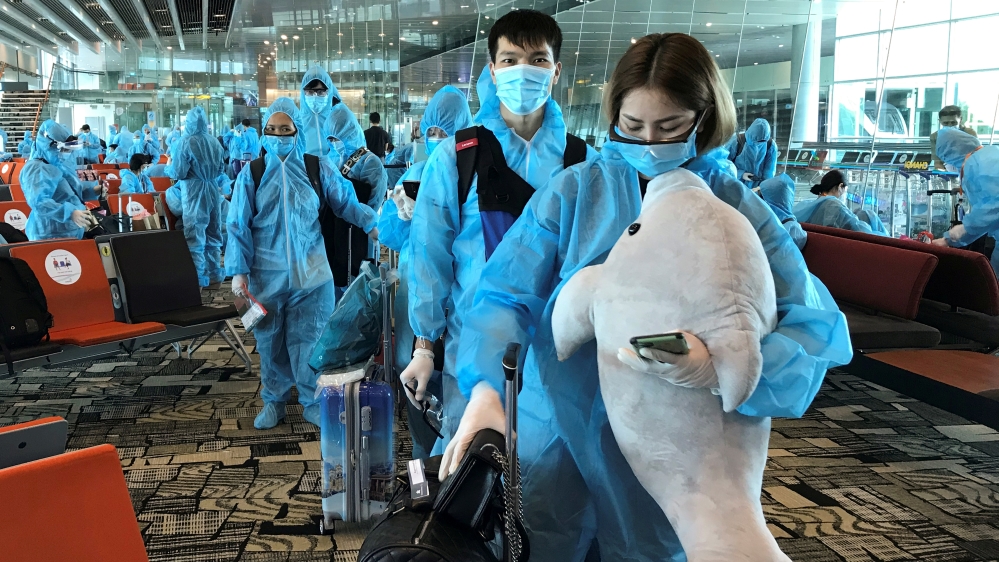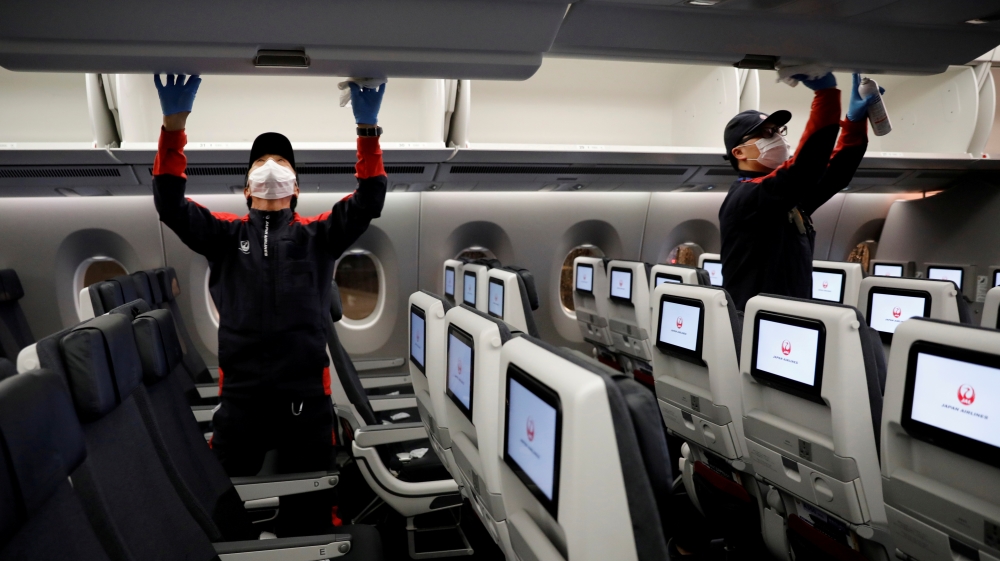Coronavirus pandemic: How to travel safely
As countries reopen borders and ease restrictions, a number of measures can be taken to reduce the risk of infection.

Editor’s Note: This series is produced in partnership with the World Health Organization (WHO).
Several countries have reopened their borders and are gradually lifting travel restrictions after months of lockdown to curb the spread of the new coronavirus.
Keep reading
list of 4 itemsMeasles outbreak kills at least 42 people in northeast Nigeria
What is behind the insulin shortage in the US?
Deaf Syrian boy hears for first time after life-changing operation
Last month, the WHO published new guidelines for the resumption of international travel. These outline safety measures and considerations for health authorities that are aimed at mitigating the risk of importing COVID-19, the disease caused by the virus.
The United Nations health agency has cautioned that travel bans are not sustainable and it urged governments to do more to control the virus within their own borders.
“We know that travel restrictions place a heavy burden on the lives and livelihoods of people, and what we have recommended from the beginning is that the restrictions that are implemented should not be unnecessarily invasive nor intrusive, and should be scientifically based,” Carmen Dolea, head of the International Health Regulations Secretariat at the WHO, told Al Jazeera.
All travellers are advised to wash their hands frequently or use a hand sanitiser; maintain a physical distance of at least one metre away from others if possible; wear a mask if they are unable to keep apart from other people; and if they have to cough or sneeze, to do so into a bent elbow or tissue that is disposed of in a closed bin.
Before the journey, passengers should also familiarise themselves with the rules and protocols put in place by the airlines and local health authorities, Dolea said.

Some countries require mandatory quarantine upon arrival, while others do not, depending on whether the person is coming from a high- or low-risk country.
The use of a so-called “immunity passport” – a certificate for those who have recovered from COVID-19 and are assumed to be immune to the virus – is not recommended by the WHO.
These may not be effective because, while people with COVID-19 mount an immune response, it is still uncertain how long this response may last or how strong it is. The WHO also outlines ethical and other concerns around these certificates.
Sick people and those who have come into contact with someone who is COVID-19 positive should not travel. Older people – aged 60 and above – and those with underlying health conditions should avoid travelling or postpone their plans, particularly to and from areas with community transmission.
“If you develop symptoms during travel, make sure that you refer to your medical provider and inform them about your travel history and follow the relevant protocols for testing, isolation of cases and contact tracing, and potential quarantine of contacts if they have been confirmed as contacts of COVID-19 cases,” Dolea said.
Live Q&A on international travel during #COVID19. #AskWHO https://t.co/w7yGyeKERv
— World Health Organization (WHO) (@WHO) August 7, 2020
What can airlines do?
Where possible, and depending on the occupancy, aeroplane seats should be assigned for adequate physical distancing between passengers.
Other measures recommended by the International Civil Aviation Organization include disinfecting the cabin frequently; limiting food and beverage service or serving sealed, pre-packaged meals; managing lavatory access; and removing newspapers and magazines on board.
Passengers are also encouraged to travel light, check in online, use self-service options for luggage, and stay in their assigned seats for the duration of the flight.

Dolea said safety precautions should be taken throughout the course of the journey, irrespective of its length.
Many countries have made it mandatory to wear face masks in public places.
The WHO has also recommended that these be worn in public areas where there is a risk of widespread community transmission and physical distancing is difficult, such as on buses, planes and trains.
Cruise ships
Travelling by sea is considered risky during this pandemic, with large clusters of cases emerging on several cruise ships around the world.
The risk of exposure on a ship is higher because “people are in close proximity to each other for a longer duration of time”, Dolea explained.
The European Centre for Disease Prevention and Control together with the European Maritime Safety Agency published detailed guidance last month for the safe resumption of operations of cruise ships.
The guidelines say a ship should be diverted to the nearest port when a possible or confirmed case of COVID-19 is identified on board.
People with suspect cases on a ship should be isolated behind closed doors and given a medical mask to wear to minimise the risk of transmission, the WHO has advised.
“Contact tracing should begin immediately after a suspected case has been identified on board without waiting for laboratory results,” it said.
Follow Saba Aziz on Twitter: @saba_aziz